How to Prepare Your White Goods for Collection

White goods can be some of the most complicated items to dispose of: they’re too large to take to the tip, items like fridges and freezers can’t be put into skips, and they often have loose cables, hoses and pipes to contend with when removing them.
So how do you prepare white goods for collection safely? We cover tips for each kind of machine to help you get them ready for collection with as little stress as possible, and cleaning tips if you are intending to donate your appliance or don’t want to get your vehicle dirty if disposing it at the local tip.
Preparing for Washing Machine Collection
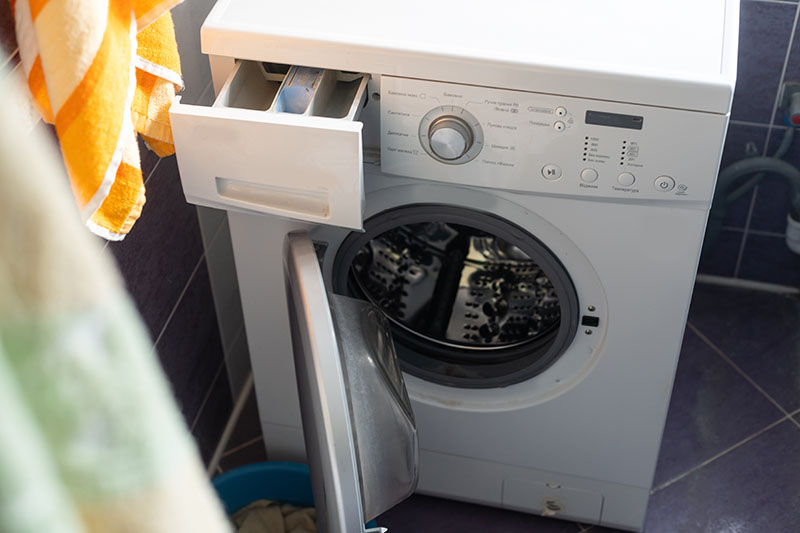
Washing machines can be a pain to dispose of. They have multiple water pipes, typically crammed under a countertop and heavy. Depending on your model, you should always use the manual to check how to securely (and safely) remove your washing machine, but if you no longer have it or you’re looking for some extra help, check out our guide on how to disconnect a washing machine.
Disconnecting a Washing Machine
Disconnecting a washing machine can involve a few water pipes removing, so we recommend reading our full guide for disconnecting a washing machine, but in short you will need to:
- Turn off and unplug from the electricity supply
- Turn off the water supply
- Unplumb the water hoses
- Disconnect the drain hose
- Disconnect any fittings to units if it is an integrated washing machine
Once done, you should be able to slide your washing machine out ready for collection.
How to Clean a Washing Machine
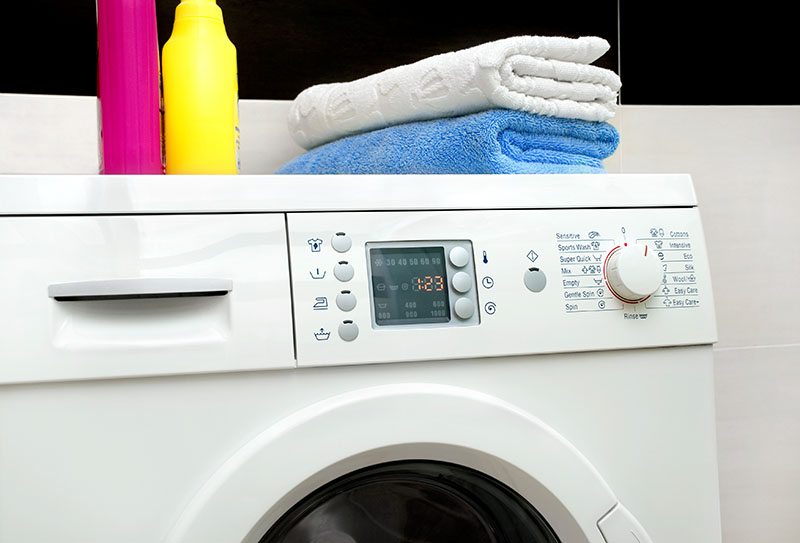
If you are transporting the washing machine yourself or gifting it to someone, you may want to give your washing machine a quick clean. This will ensure grime or liquids damage your vehicle during transportation too.
Cleaning a washing machine is a piece of cake once you know how. Make sure that the machine is off and unplugged before you do anything like pulling it out or poking your head into the drum, and that it’s stable on level ground to prevent accidents or injuries.
Clean the Drum: This can be done with either a self-cleaning cycle or a bit of elbow grease, depending on your machine. If you prefer the easy way, check if your washer has a self-cleaning cycle and what cleaner to put in while you run it.
If it doesn’t have one, it’s time to get your favourite detergent, some rubber gloves and a cloth. Gently spray and wipe around the seal and make sure to get inside the creases before wiping out the drum in the same way.
Clean the Hose: The drain hose can get pretty smelly if left too long without a good clean. Before you get started, unplug the washer, and allow the hose to drain into a bucket until there isn’t any water left inside.
Carefully check inside the pipe for obstructions - if there are any, you can use a drain snake to pull them out of the hose or pour in a mixture of baking soda and vinegar to try and dissolve the block. Always check the correct ratio of vinegar to baking soda before trying this trick! Once the blockages are gone, it’s a simple matter of gently soaking and scrubbing the pipe to remove bacterial buildup.
Clean the Drawer: Before you get started on the dispenser drawer, you’ll need to remove it from the machine. The manual will have tips on how to do this - it might not always be as simple as pulling it straight out.
After that, cleaning is up to preference. Use a washing-up liquid or a vinegar solution, and scrub with a small brush to get in all the cracks. Once it’s clean, rinse, dry it, and return it to the machine.
Moving a Washing Machine
Washing machines can be heavy! It’s best to leave the worst of the lifting to our Man and Van team who can collect from a room of choice, but you’ll still need to get the machine disconnected and moved from under any kitchen units in advance of collection. Otherwise read on if you are moving it yourself…
If you have a straight run of level ground all the way to your door, you can ease the washer forward by placing it on a mat and gently walking it side to side. If you need to get it down or up a staircase, always make sure you have someone helping you, and never lift more than you know you can handle.
Preparing for a Dishwasher Collection
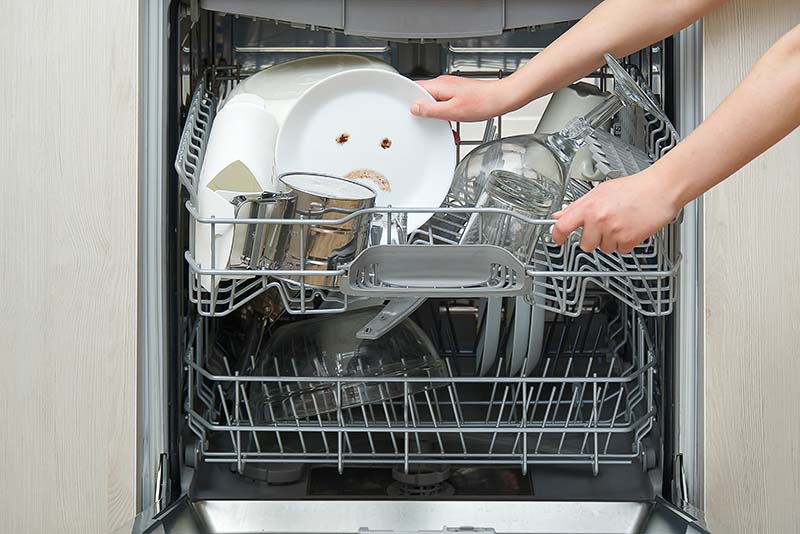
Before you get your dishwasher collected, it’s important to make sure it’s empty! The last thing you want is to lose plates in the process, and waste workers don’t want to cut themselves on shards of pottery with the risk of infection from dirty plates and glasses.
Disconnecting a Dishwasher
A dishwasher is similar to a washing machine in the way it’s connected; both have inlet pipes and a drain hose and should be plugged into a regular electrical socket.
There are many guides on how to disconnect a dishwasher if you need some guidance or confused because it is an integrated dishwasher. If you have the manual still, that may help too. Like the washing machine, make sure you turn off the power and unplug the machine before you get started.
How to Clean a Dishwasher
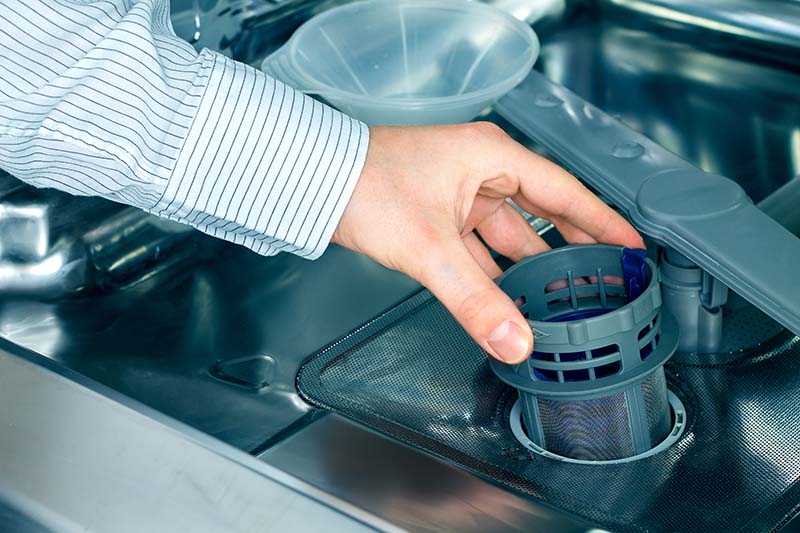
If you are gifting your dishwasher, this is a good time to give it a clean before donating or selling. Dishwashers regularly deal with food residue, a bacterial hive that can become dangerous if left too long. It’s recommended that you clean your dishwasher every few months to prevent bacterial build-up.
Cleaning your dishwasher is vital to keep it safe to use and unclogged - the last thing you want is dirty water leaking onto your floor from a blocked drain hose when you remove it!
Clean the Loading Bay: This is an easy one! To clean a dishwasher, simply run it with a cup of white vinegar and nothing else. Set the cup at the bottom of the dishwasher and put the machine on a hot cycle. This will push the vinegar around the machine and disinfect it.
Once the dishwasher cycle has finished, it’s worth scrubbing around the nooks and crannies to make sure they’re completely clean.
Clean the Filter: Cleaning the filter is essential for maintaining your dishwasher’s efficiency and preventing any unpleasant odours. To clean the filter, start by locating it – usually found at the bottom of the dishwasher under the spray arm. Carefully twist and lift it out of its housing.
Rinse the filter thoroughly under warm, soapy water, using a soft brush to scrub away any food particles or grime. For any particularly stubborn residue, soak the filter in a solution of warm water and a small amount of vinegar for about 15 minutes, then rinse again. Once clean, place the filter back securely in its original position.
Clean the Drain Hose: Unplug your machine and pull it out to find the drain hose at the back. Prepare yourself with a bucket and disconnect the pipe, placing it down into the bucket until no more water comes out.
After that, check the pipe carefully for blockages, and use a drain snake to release them. For stubborn blocks, you can dissolve them with baking soda and vinegar - never use a drain unblocking liquid, as this can weaken and damage the hose material causing a flood risk.
Moving a Dishwasher
Dishwashers can be dangerous, especially if they tip over. Make sure that the door is fully closed before you attempt to move the machine and enlist help if you need to go up or down stairs. Just as with the washing machine, you can place the base of the dishwasher on a towel or a mat and slide it from side to side to move it across a level floor.
If you can’t get it outside, contact us at HIPPO and our Man and Van rubbish removal team can make a dishwasher collection from inside your house.
Preparing for Fridge Collection

Disposing of a fridge can be one of the most complicated white goods to dispose of, especially as it uses a completely unique (and ingenious) mashup of pipes and condensers to work. This means that a fridge can’t be placed in a skip, and you’ll need to be incredibly careful when moving it around.
Old fridges may contain F-gas, which is incredibly harmful to the environment if it gets out, hence we only collect them with our Man and Van service to ensure they are disposed of responsibly.
How to Disconnect a Fridge
Luckily, disconnecting a fridge is as easy as unplugging it from the wall – unless you have a plumbed fridge that dispenses chilled water and/or ice cubes. Otherwise, a typical standard fridge is self-contained, so it shouldn’t be connected to water pipes.
If your fridge is integrated, however, you may have to unscrew and disassemble the surrounding cupboards to remove it.
How to Clean a Fridge Freezer
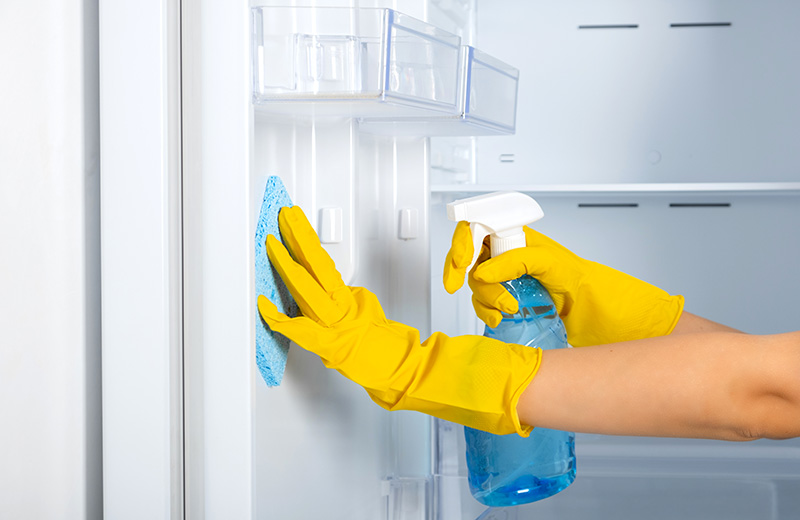
Cleaning a fridge is reasonably simple if you regularly clean it out and wipe the shelves. Defrosting is a once-a-year event, and the drain only really needs attention if it’s blocked. Keep an eye out for stains and smells to find out if your fridge needs a clean.
Allow it to Defrost: Freezers need to be defrosted at least once a year to remove ice buildup and to keep the appliance ticking over. Defrosting isn’t as scary as it sounds, however - All it requires is turning the appliance off, removing the drawers, and leaving the door open. Make sure that you’ve defrosted or eaten anything you want to keep and place a towel or absorbent mat underneath the machine to catch the water.
Clean the Compartments: Remove shelves, drawers and grids from the fridge and set them aside. Bring your favourite detergent, a cloth and a pair of gloves, and spray and wipe around the inside of the machine. Make sure to clean all the corners and folds to kill off the bacteria.
Clean the Drawers: This can be done whichever way you prefer. Do a round or two with washing up liquid or spray and wipe around the drawers, paying attention to any staining or marks on the plastic. Make sure that you use antibacterial products, as dangerous bacteria can thrive around food waste.
Clean the Drain Hole: Not many people know how to clean a fridge drain hole, or that you even need to - but it is important! Once you’ve turned off the fridge and removed the drawers, you should be able to access the drain. Pull away the drain cover and check for any debris. If the clog is obvious, you may be able to remove it by gently probing the area with a small brush. After the entrance to the drain is clear, pour warm water with a dash of detergent into the hole until the water runs cleanly through the pipe. Then it’s simply a case of emptying and cleaning the drain pan and replacing the drain cover inside the fridge.
Moving a Fridge Freezer
A fridge freezer is one of the largest white goods to move, and it can be dangerous to do it alone. It’s always preferable to use a dolly rather than move the machine by hand: simply slide the fridge back onto the dolly and secure it with straps to keep it from falling off. After that, roll it out to the collection point outside.
Try not to tilt or jolt the fridge during transit, and make sure that there’s no damage to the machine before your collection company arrives. Ensure that if placing it outside no sticks or stones can damage the underside where there’s fragile components such as piping and the compressor as these may contain the harmful F-gases mentioned earlier.
Preparing for Microwave Collection
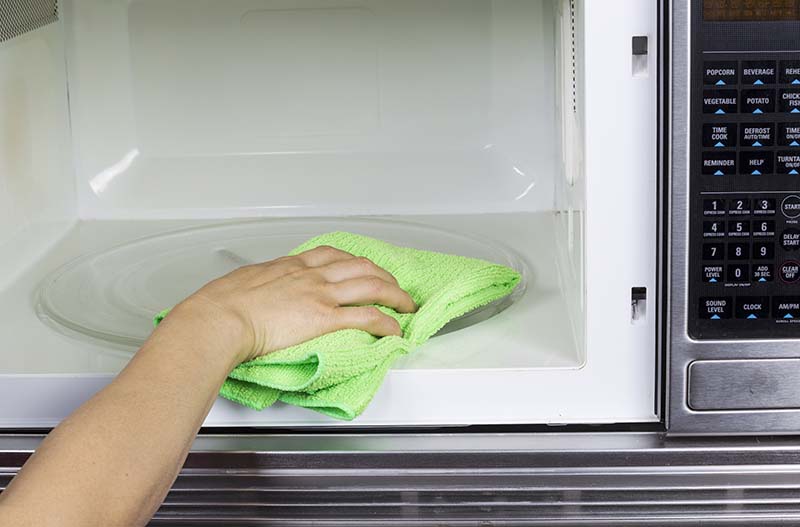
A microwave is by far the easiest of the bunch to dispose of. Light enough to carry and connected by nothing more than a plug socket, removing your microwave for collection is as simple as unplugging it and handing it to the collection man.
Cleaning a Microwave
From exploding potatoes to bubbling soup, microwaves can get dirty fast. However, it’s important to avoid clogging the machine with any water, so cleaning it isn’t quite as simple as wiping around with a cloth.
Placing vinegar mixed with water into a bowl and running the microwave for a few minutes can evaporate the liquid onto the walls of the machine as a rudimentary cleaner. Leave the door closed for an additional 5 minutes before wiping the condensation off the walls without using spray or water. After that, it’s simply a matter of removing the rotating glass plate and washing it separately.
White Goods Collection Services
Hopefully this guide has helped you to get your kitchen revamp ready to go, and ready for your new appliances on their way to your door! If you haven’t arranged a collection for your old white goods yet, HIPPO can help you to find the best solution for your waste.

